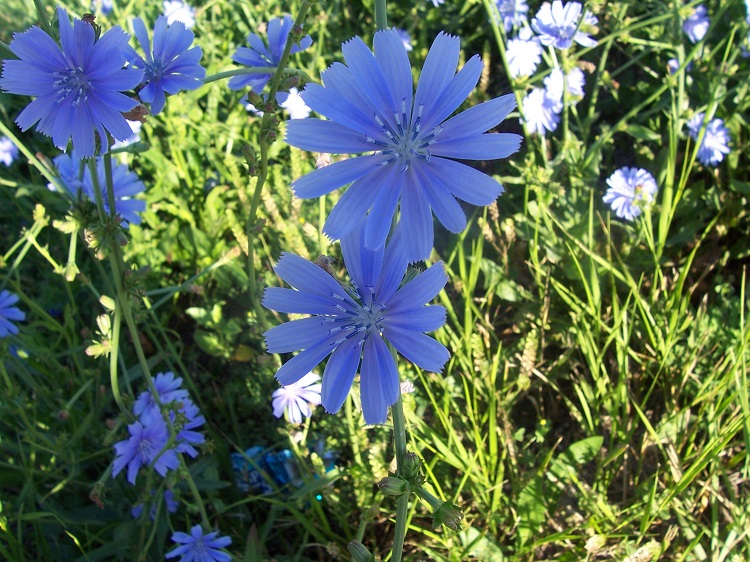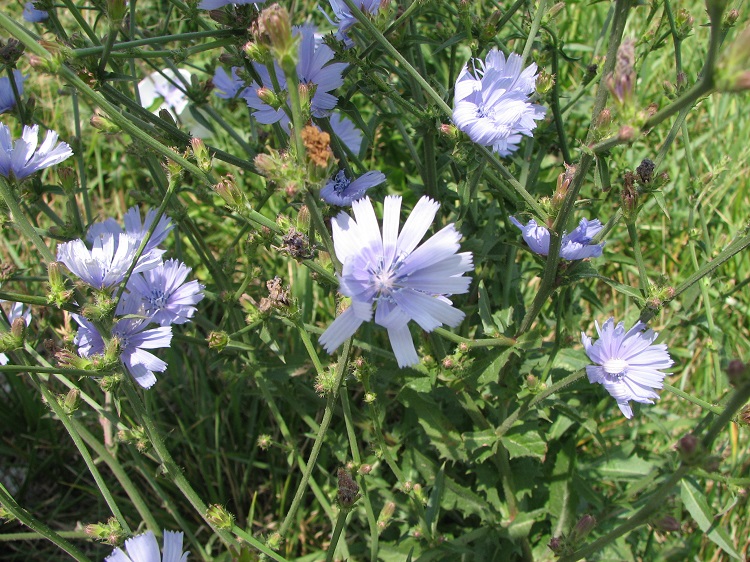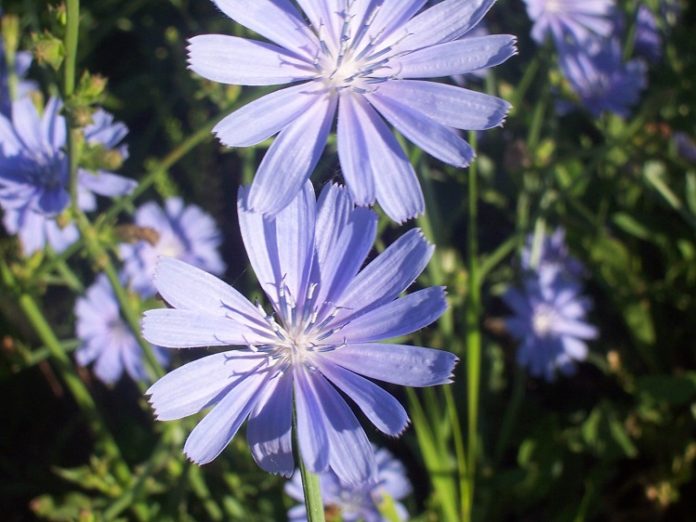The roadway along Iowa Highway 141 is lined with pale blue chicory flowers. The pretty little blossoms grow on weedy looking stalks that are blown about as the cars zoom past. The plant is not native to the United States but is very well established and has spread across the country.
It is also called succory, blue sailors and blue dandelion.
Chicory is a plant native to southern Europe and the Mediterranean Sea area. It was brought from Holland to the United States in 1785 by Massachusetts Gov. James Bowdin. One report said he wanted to use the plant’s young leaves in his salads, while another story said that he wanted the herb for its medicinal value.
The three-foot-tall plant is common along the roadsides and grows very well in the poor soil. The leaves are shaped like dandelion leaves and are thickest at the base of the plant. The upper parts of the loosely branched stems only have few small leaves.
The one-and-one-half-inch-diameter blue flowers are similar in shape to asters, and each flower only lasts for one day. Although it is an alien plant to Iowa, it has never been classified as a weed because it does not spread into farm fields or tolerate cultivation.
The plant is unique because it can grow in very acidic soils. The acid that the plant extracts from the soil is what gives its milky-white sap a bitter taste.
If the leaves of chicory plant are to be used in a salad, they should be harvested in early spring to avoid the bitter taste. The best part is the white leaf stalk that grows under ground. In Euell Gibbon’s book, “Stalking the Wild Asparagus,” he says people who really like chicory grow it in low light to reduce the bitterness and increase the tenderness of the leaves.
Chicory is usually associated coffee. During World War II, when coffee was difficult to obtain, chicory was used as a coffee substitute, or it was mixed with coffee. Chicory still is a popular beverage of the Creoles in Louisiana and other parts of the southern U.S. One part chicory is added to two parts of coffee when they are mixed.
The young roots of chicory are roasted in an oven until they are hard and brittle and are dark brown on the inside. Then they are ground and brewed like regular coffee. Because the roots are more soluble than coffee, less chicory is needed.
Several breweries have found that chicory can also be used to flavor beer. One brewery in Delaware makes a dark beer called Chicory Stout. They advertise the brew with the slogan, “It is good for what ales you. It is nature’s Prozac.”
Many claims have been made regarding the health benefits of the herb. The Romans used the plant as a blood purifier, and the French in medieval times called chicory an herb for the liver. It is sold in health food stores today as a tonic for the liver, gallbladder and spleen along with other claims as how it benefits the human body. The milky white sap is said to be a treatment for the removal of skin warts.
Chicory is grown commercially in Belgium and Holland for a chemical called inulin, obtained from the plant’s sap. Inulin has a variety of uses in the production of detergents, solvents and pharmaceuticals. The plant is also used as animal fodder. Chicory has a lot of uses, and the pretty little blue flowers growing along the roadside make for a more scenic drive.
If you like Ray Harden’s tales of nature, then please show your support with a $5-a-month recurring donation to ThePerryNews.com. One-time donations are also welcome.



















